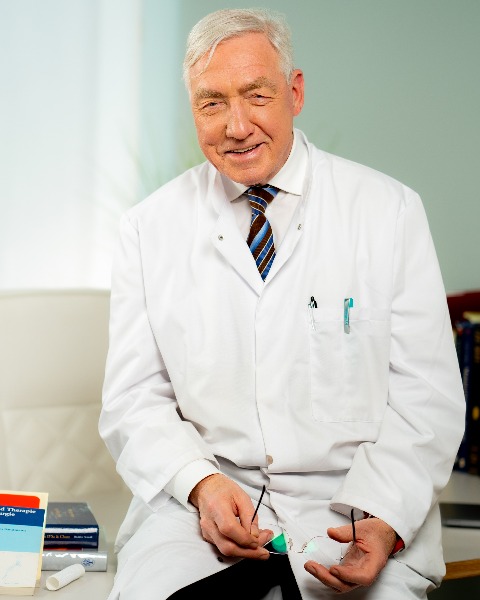Villavicencio - International Session
Hemodynamic Consequences of Pre-and Retroaortic Left Renal Vein Compression(„Nutcracker Syndrome“) Causing a Surprising Variety of Symptoms and Complaints, Especially in Patients Affected by Hypermobility Spectrum Disorders
The Nutcracker Syndrome (NCS) is a rare disorder, but in patients with a hypermobility spectrum disorder (HSD), mostly hypermobile EHLERS-DANLOS Syndrome (hEDS ), NCS is found most often together with MAY-THURNER (MTS) and other compression syndromes.
The variety of symptoms and complaints is really puzzling, but can easily be explained by functional ultrasound-duplex and radiological imaging.
Methods: From 01.07.2019 to 10.08.2023, 134 patients, female =114 (85.1%), male =20(14,9%), mean age 30,9 ys (female 31,43 ys, male 27,30 ys.) underwent decompression surgery for NCS as monocompression (n=5).
In 129 patients other compression syndromes were present also (NCS and MTS (n=27), with MTS and median arcuate ligament syndrome (MALS) (n= 36), together with MTS, MALS and superior mesenteric artery syndrome (SMAS) (n=27), together with MALS only (n=25) together with MTS and SMAS (n=10) and together with MALS and SMAS (n=4).Four patients presented with retroaortic NCS.
Destination of patients: Germany n= 50, Europe n= 34, Overseas n=50)
The indication for surgery was built on three pillars:
a) symptoms and insufficiencies,
b) hemodynamics (functional USD-Duplex),
c) morphology (CTA, MRI)
According to the BEIGHTON score 114 pat. were affected by HSD (female 98 (86%), male 16 (14%), mostly hEDS.
All suffered from migraine, nausea, vertigo, fainting, POTS, left flanc and inguinal pain.
Thirteen patients arrived wheel chair bound due to unilateral (n=4) or parapareses (n= 9) Decompression of the LRV was performed in 134 pat. by extravenous ringenforced PTFE tube grafting by applying a special suture technic for fixation.
All other compression syndromes were treated at the same operation also.
Twelve patients had undergone i.v. stenting before elsewhere without improvement.
The stent was stabilized from outside the vein or partially resected and replaced by tube grafting.
Due to floating kidney and related POTS unilateral nephropexy was performed simultaneously in 52(45,6 %) patients( female n=47, male n=5 ).
Results:
Neither death nor infection occurred.
Five patients (3,7%) had to undergo a second operation due to residual (n=2) or recurrent (2) or remaining (n=1) compressions and related symptomatology.
At least five patients became pregnant and gave natural child birth.
All wheel chair bound patients walked home after decpompression on their own feet.
Conclusions:
HSD and hEDS are the underlying disorders in the majority of these cases, which suffer not only from NCS but most often from multicompression syndromes.
Especially the neurological and spinal cord symptoms, which are related to spinal cord compression from reversed flow into the epidural venous plexus via tronc reno-rachidien, disappeared and have not been reported in detail in this group of patients previously in the literature and require special attention.

Wilhelm Dr. Sandmann, Prof. Dr. med Dr. h.c.
Head Vascular Surgery
Clinic Bel Etsge
Neuss, Nordrhein-Westfalen, Germany
